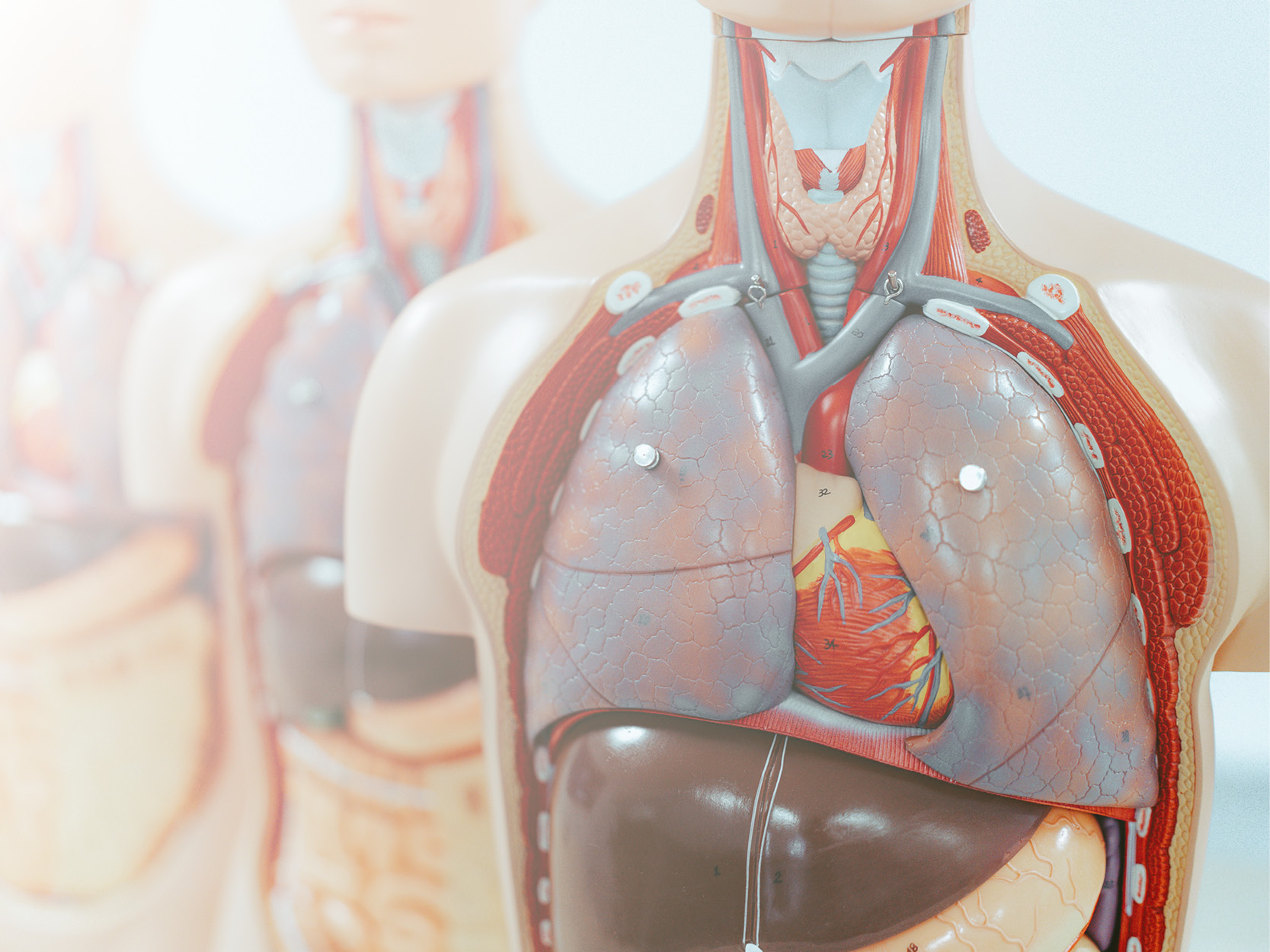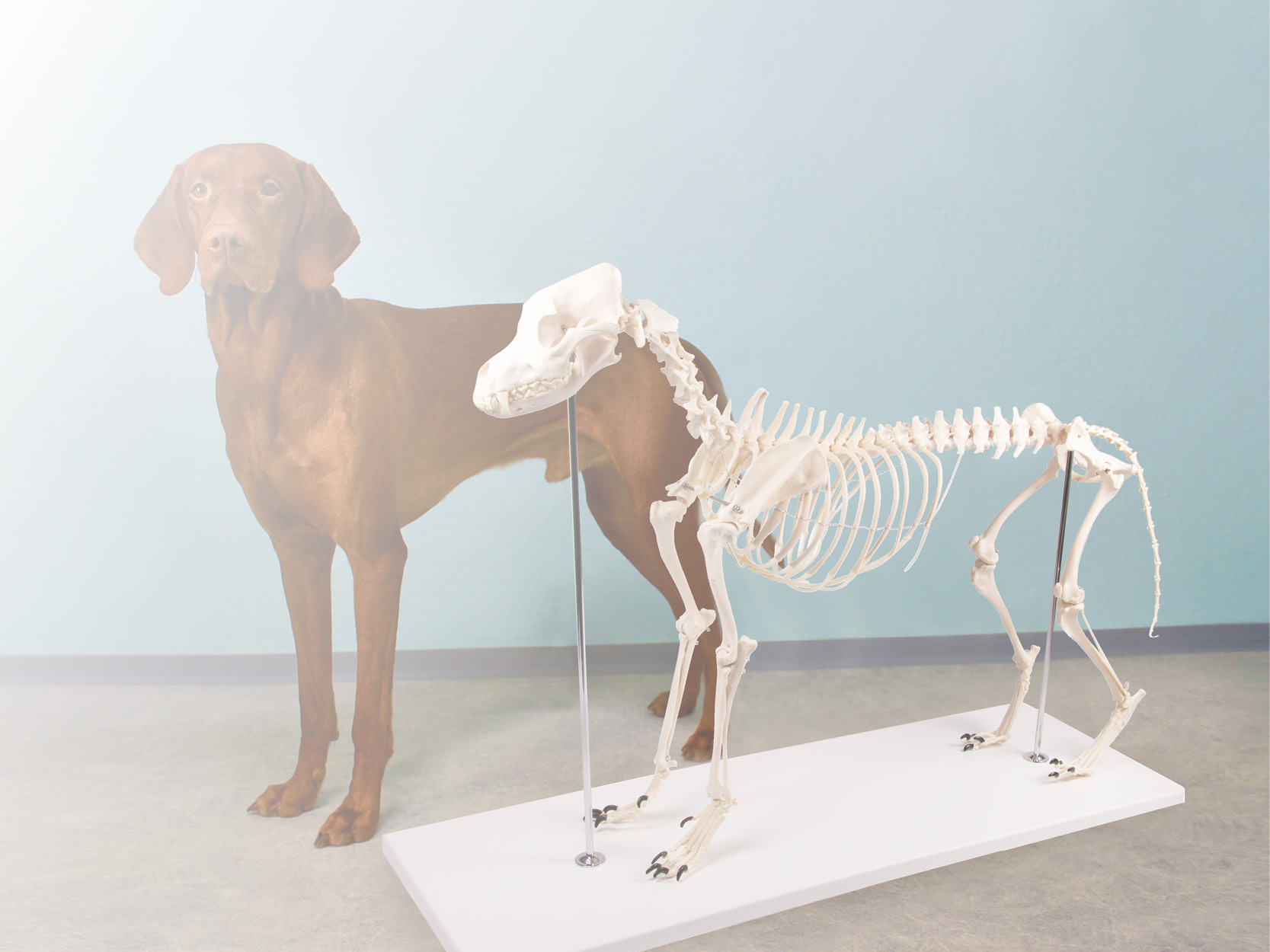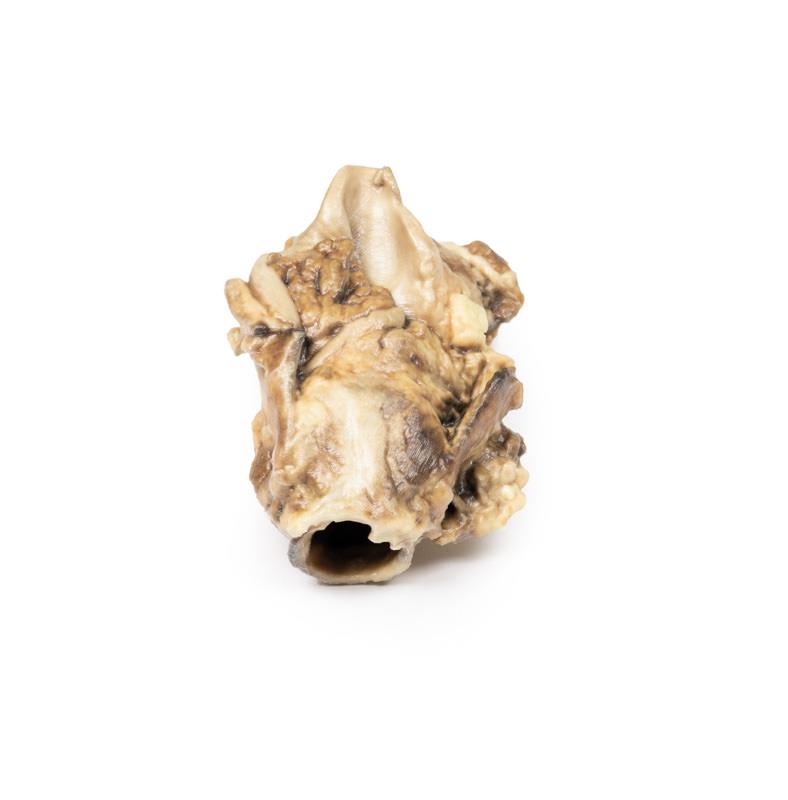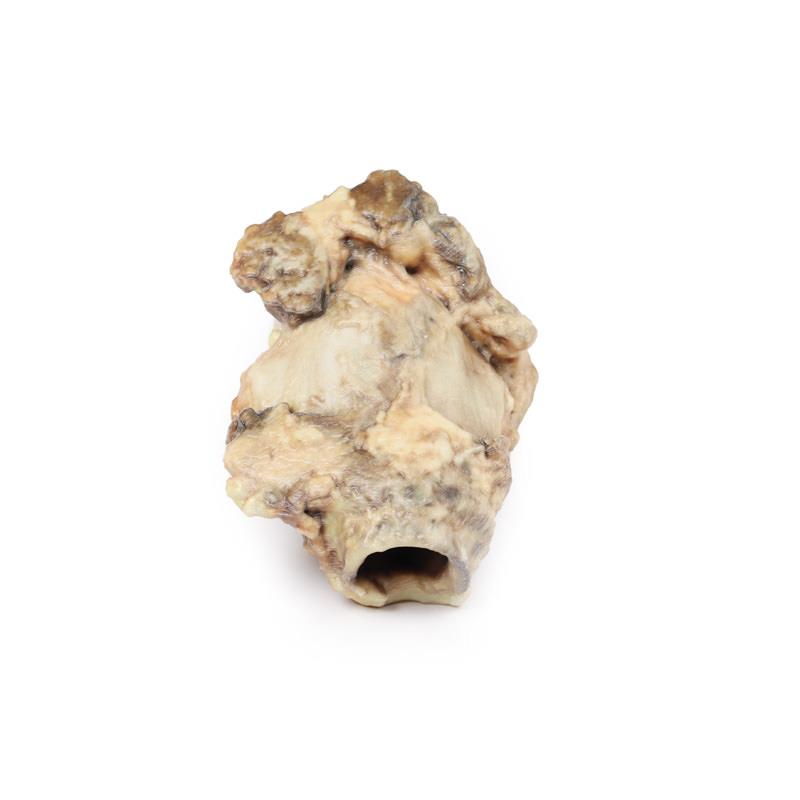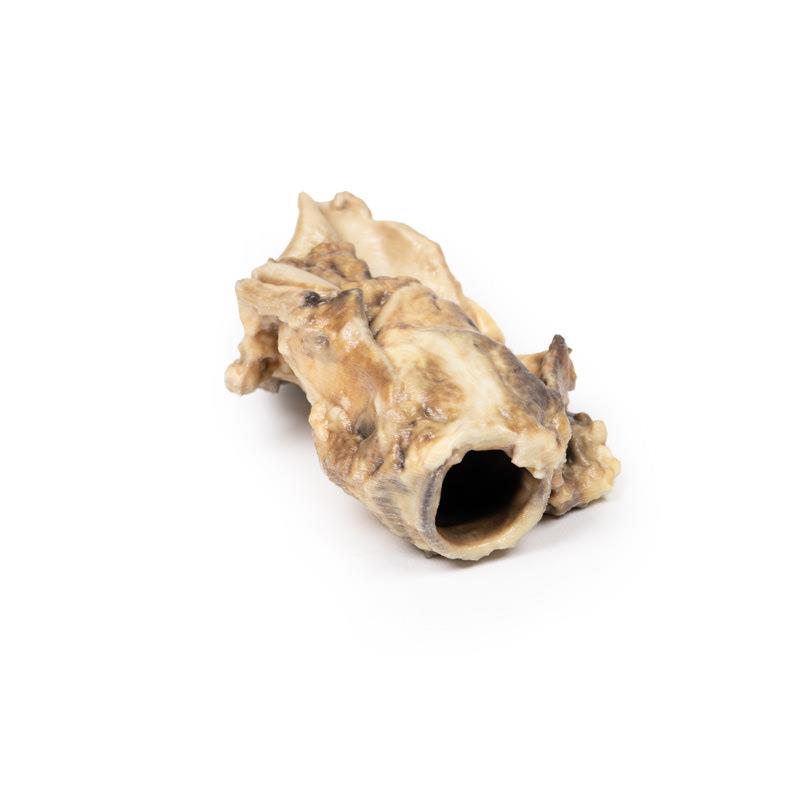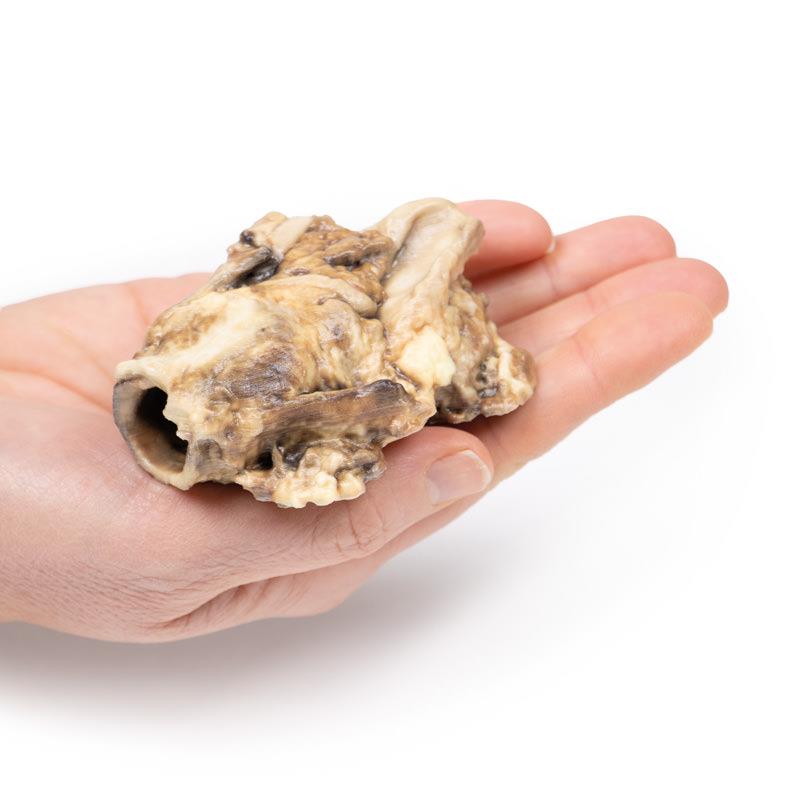Carcinoma of Pyriform Fossa
Mehr erfahren347,48 €*
Artikel in Produktion, lieferbar vorauss. in 2-3 Wochen
Produktnummer:
MP2051
Artikelnummer: MP2051
Produktinformationen "Carcinoma of Pyriform Fossa"
Clinical History
A 60-year old male presents with a 6-week history of globus (i.e. the feeling of a lump in his throat) and dysphonia. On examination, he had enlarged cervical lymph nodes. Investigations discovered a laryngeal tumour. He underwent a laryngectomy and a cervical lymph node dissection. He made a full recovery.
Pathology
The specimen is the amputated larynx viewed from behind. It shows an irregular fungating tumour arising from the left pyriform fossa. There is distortion and oedema of the laryngeal tissues. Histologically, this was a squamous cell carcinoma.
Further Information
Over 95% of laryngeal cancers are squamous cell carcinomas (SCC). The tumour usually develops on the vocal cords but may occur above or below the cords, on the epiglottis, aryepiglottic folds or in the pyriform sinuses. The cancer usually begins as carcinoma in situ, progressing to ulcerated, fungating invasive carcinoma with continued exposure to carcinogens.
The greatest risk factors for developing cancer of the larynx are tobacco smoke and alcohol consumption. Human Papilloma Virus (HPV) infection, asbestos exposure and irradiation have also shown increased incidence. Males are affected more than females. It most frequently presents in the 6th decade of life. Laryngeal cancer may spread by invading into surrounding structures, via lymphatics usually to local cervical nodes or haematogenous metastasis most commonly to the lungs. Common symptoms on presentation include dysphonia, dysphagia, odynophagia, globus and cough. Less commonly haemoptysis, stridor, dyspnoea and halitosis may be described. Treatment varies on the stage of the disease. Smoking and alcohol cessation are important for all disease stages.
In early disease laryngeal preservation treatments may include laser therapy, microsurgery and radiotherapy. Later stage disease treatments may involve a combination of laryngectomy, radiotherapy and chemotherapy. HPV-related HNSCC have better outcomes than those non-HPV positive tumours. HPV-vaccination programmes have been introduced in several countries, including Australia and the UK, for both boys and girls, in order to reduce their risk for HNSCC.
A 60-year old male presents with a 6-week history of globus (i.e. the feeling of a lump in his throat) and dysphonia. On examination, he had enlarged cervical lymph nodes. Investigations discovered a laryngeal tumour. He underwent a laryngectomy and a cervical lymph node dissection. He made a full recovery.
Pathology
The specimen is the amputated larynx viewed from behind. It shows an irregular fungating tumour arising from the left pyriform fossa. There is distortion and oedema of the laryngeal tissues. Histologically, this was a squamous cell carcinoma.
Further Information
Over 95% of laryngeal cancers are squamous cell carcinomas (SCC). The tumour usually develops on the vocal cords but may occur above or below the cords, on the epiglottis, aryepiglottic folds or in the pyriform sinuses. The cancer usually begins as carcinoma in situ, progressing to ulcerated, fungating invasive carcinoma with continued exposure to carcinogens.
The greatest risk factors for developing cancer of the larynx are tobacco smoke and alcohol consumption. Human Papilloma Virus (HPV) infection, asbestos exposure and irradiation have also shown increased incidence. Males are affected more than females. It most frequently presents in the 6th decade of life. Laryngeal cancer may spread by invading into surrounding structures, via lymphatics usually to local cervical nodes or haematogenous metastasis most commonly to the lungs. Common symptoms on presentation include dysphonia, dysphagia, odynophagia, globus and cough. Less commonly haemoptysis, stridor, dyspnoea and halitosis may be described. Treatment varies on the stage of the disease. Smoking and alcohol cessation are important for all disease stages.
In early disease laryngeal preservation treatments may include laser therapy, microsurgery and radiotherapy. Later stage disease treatments may involve a combination of laryngectomy, radiotherapy and chemotherapy. HPV-related HNSCC have better outcomes than those non-HPV positive tumours. HPV-vaccination programmes have been introduced in several countries, including Australia and the UK, for both boys and girls, in order to reduce their risk for HNSCC.





